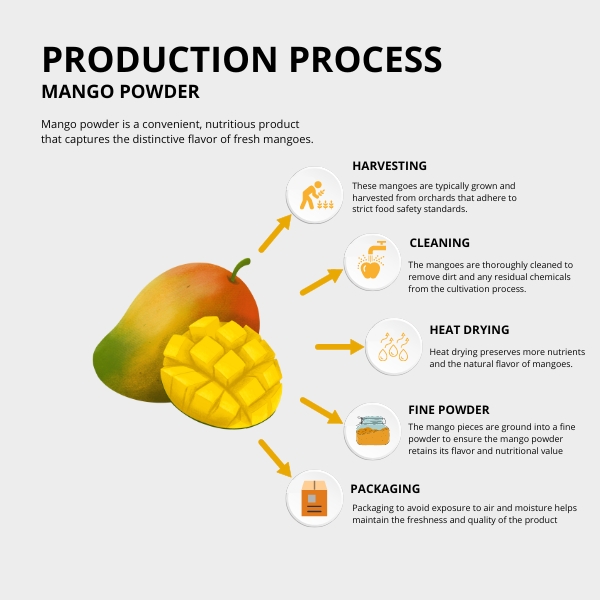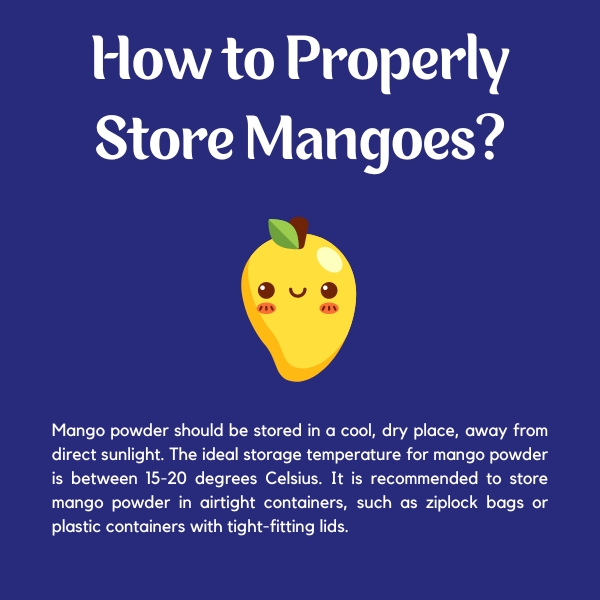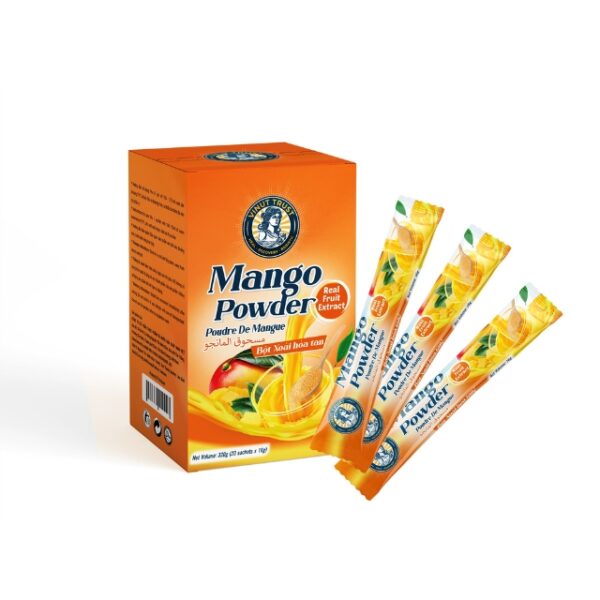Mango Powder: 4 Ways To Preserve You Didn’t Know!

Mango powder, with its versatile and nutritious qualities, captures the essence of fresh mangoes, enhancing various culinary creations from smoothies to baked goods. To make the most of this product, understanding its production, storage, and selection of high-quality options is essential. In this article, we'll explore the production process, preservation methods, and tips for choosing the best mango powder on the market.

Mục lục
Mango Powder Production Process
Mango powder is a convenient, nutritious product that captures the distinctive flavor of fresh mangoes. The production process begins with selecting ripe, high-quality mangoes. These mangoes are typically grown and harvested from orchards that meet strict food safety standards.
After harvesting, the mangoes are thoroughly washed to remove dirt and any residual chemicals from cultivation. They are then peeled, pitted, and cut into small pieces. The next stage involves drying the mangoes. There are two main methods for drying mangoes: heat drying and freeze drying. Heat drying is time-efficient, but freeze drying preserves more of the nutrients and natural flavor of the mango.
Once dried, the mango pieces are ground into a fine powder. This grinding process must be done carefully to ensure the mango powder retains its flavor and nutritional value. The mango powder is then immediately packaged to prevent exposure to air and moisture, which helps maintain its freshness and quality.

How To Preserve Mango Powder
Proper storage is crucial to keeping mango powder fresh and flavorful. Mango powder should be stored in a cool, dry place away from direct sunlight. The ideal storage temperature is between 15-20 degrees Celsius. Humidity is also a critical factor; the powder should be kept in a low-humidity environment to prevent clumping and quality degradation.
Mango powder should be kept in airtight containers, such as ziplock bags or plastic containers with tight-fitting lids. This prevents air and moisture from getting in, preserving the powder's flavor and quality over a long period. When using the powder, only take out the needed amount and reseal the container immediately.

Choosing High-Quality Mango Powder
With many types of mango powder available on the market, selecting a high-quality product requires attention to several factors:
Clear Origin
Choose products that provide clear information about the mango source, production process, and manufacturing location. Products from reputable brands usually ensure better quality and food safety.
Airtight Packaging
High-quality mango powder is typically packaged in airtight containers, such as ziplock bags, plastic containers, or tins. The packaging should be secure and free from tears or punctures.
Color & Aroma
Quality mango powder usually has a bright yellow color and a characteristic mango aroma. If the powder has an unusual color or unpleasant smell, it might be spoiled or of low quality.
Ingredients & Additives
Check the ingredient list on the product label. High-quality mango powder typically contains minimal additives or preservatives. Prefer products with natural ingredients.

Conclusion
The production and preservation of mango powder require meticulous processes to ensure product quality and flavor. Understanding the production process, proper storage methods, and how to choose high-quality mango powder will help you enjoy the best benefits from this product. Mango powder is not only a nutritious ingredient but also offers a delicious flavor, making it easy to use in various recipes and beverages.
